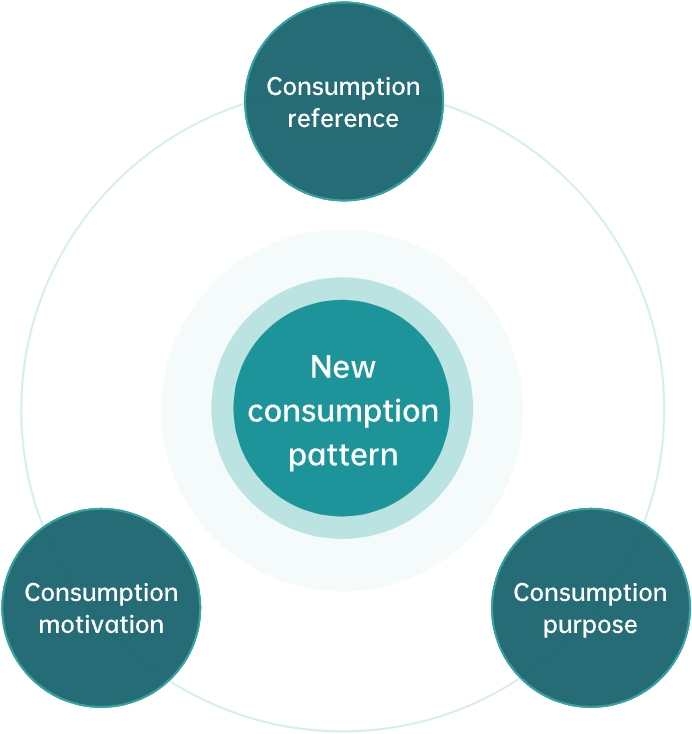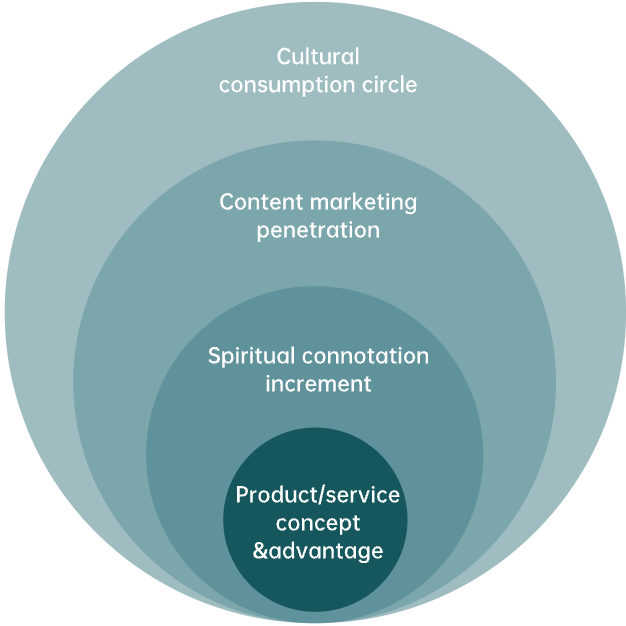
Changes in consumption patterns
from functional to symbolic
The consumption patterns, which transit from functional to symbolic, does not mean that product functions and qualities are no longer important. However, the younger generation analyse not only what they buy but also the very act of consuming, including brand recognition, emotion experience and social contents.
Self-definition and identity recognition
Consumption becomes a means of self-expression expect for solving specific problems by products or services.
Social communication and virtual world
In the era where information can be gathered and disseminated simultaneously viasocial networks, whether brands are able to continuously create value and have strong binding relationships with the consumers are the top priority.









